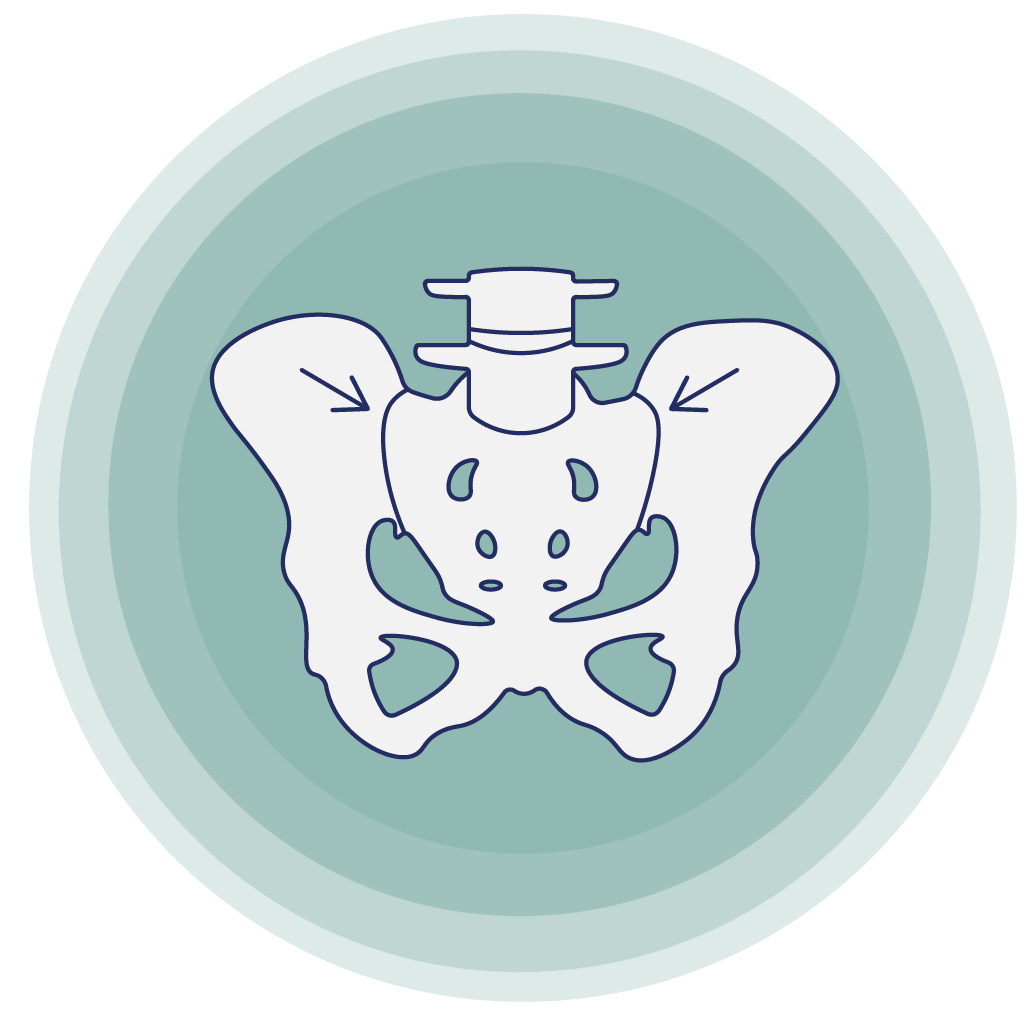

Sacroiliac (SI) Joint Program
Have you been diagnosed with “Sacroiliac Joint Dysfunction,” “pelvic instability,” “sacral torsion” or “sacroilitis?” Do you have pain in or around the low back, hip or sacroiliac joint? We can help!
Not only will we thoroughly evaluate your low back pain, but we are trained to specifically evaluate your SI joint. Through one-on-one, in-clinic special tests, hands-on evaluation and interview, we will determine the role of the SI joint in your pain or symptoms.


OUR goal is to identify the role of the SI joint in your back pain in order to effectively and efficiently treat your pain so that you can reach YOUR goals!
SACROILIAC (SI) JOINT PROGRAM
The sacroiliac (SI) joint is the junction between the ilium bone of the hip and the sacrum bone of the lower spine. This articulation is surrounded by several ligaments and muscles that support the joint and impact its function.
Patients can describe SI joint symptoms as sharp and stabbing, or dull and achy pain in the low back or hip region on one or both sides of the body. Some patients’ pain radiates upwards into the back or downwards into the leg, away from the original site of pain. Patients can have difficulty with static movements such as sustained standing and sitting, and/or have difficulty with more dynamic movements such as sit to stands, walking, bending, stair climbing or playing recreational sports or hobbies.
Trauma to the lumbosacral region from falls, car accidents, sports injuries and more; older age, inflammatory arthritis, scoliosis, true and apparent leg length discrepancy, previous spine surgery and history of pregnancy are all considered
factors that may increase the chance of experiencing SI joint symptoms. 1
Pain or symptoms between the low back or hip can be indicative of SI joint pain, but symptoms from the SI joint can be felt in more than one place. Causes of SI joint pain can be difficult to diagnose with imaging, such as x-rays, CT scans, or even MRIs. An SI joint evaluation with our physical therapist who is trained in SI joint dysfunction will provide clarity as to what is contributing to your pain.
Absolutely! Scoliosis is a risk factor for SI joint symptoms. If you are waiting for your evaluation with our scoliosis physical therapist, Brittany Hunt, PT, or if you have recently completed your episode of care with her but have questions about your SI joint, you are more than welcome to schedule an evaluation with our SI physical therapist, Julie Brace PT, DPT. You are always welcome to start with Julie for low back or SI joint pain and then schedule with Brittany for further scoliosis-specific care as needed, too.
SI joint treatment involves hands-on manual techniques, repeated physiological movements, glute and abdominal strengthening and activities that are tailored
specifically to your needs. We work together towards your functional goals, such as improving ability to walk, stand, stair climb, run, hike, return to sport, and more.
A new patient starts with a one-hour, one-on-one evaluation on their first day; the evaluation consists of a thorough interview, hands-on testing, observation of movement, range of motion and strength testing, functional movement screening and identification of goals. Following evaluation, each treatment session is one hour of a variety of activities, which can include hands-on techniques, therapeutic range of motion and strengthening, and functional movement, depending on what you need. Be sure to wear athletic clothing and athletic footwear, such as tennis shoes or sneakers.
While SI joint evaluation and treatment is a specialty we offer, it is covered by insurances under physical therapy benefits. We are in-network with all major insurances, so please feel free to call us to further determine your individual benefits.
References
1. Cohen SP, Chen Y, Neufeld NJ. Sacroiliac joint pain: a comprehensive review of epidemiology, diagnosis and treatment. Expert Rev Neurother. 2013;13(1):99-116. doi:10.1586/ern.12.148.
Do you have scoliosis and a history of one or more pregnancies, fall or trauma to the hip or low back, or other injury to the SI joint?
